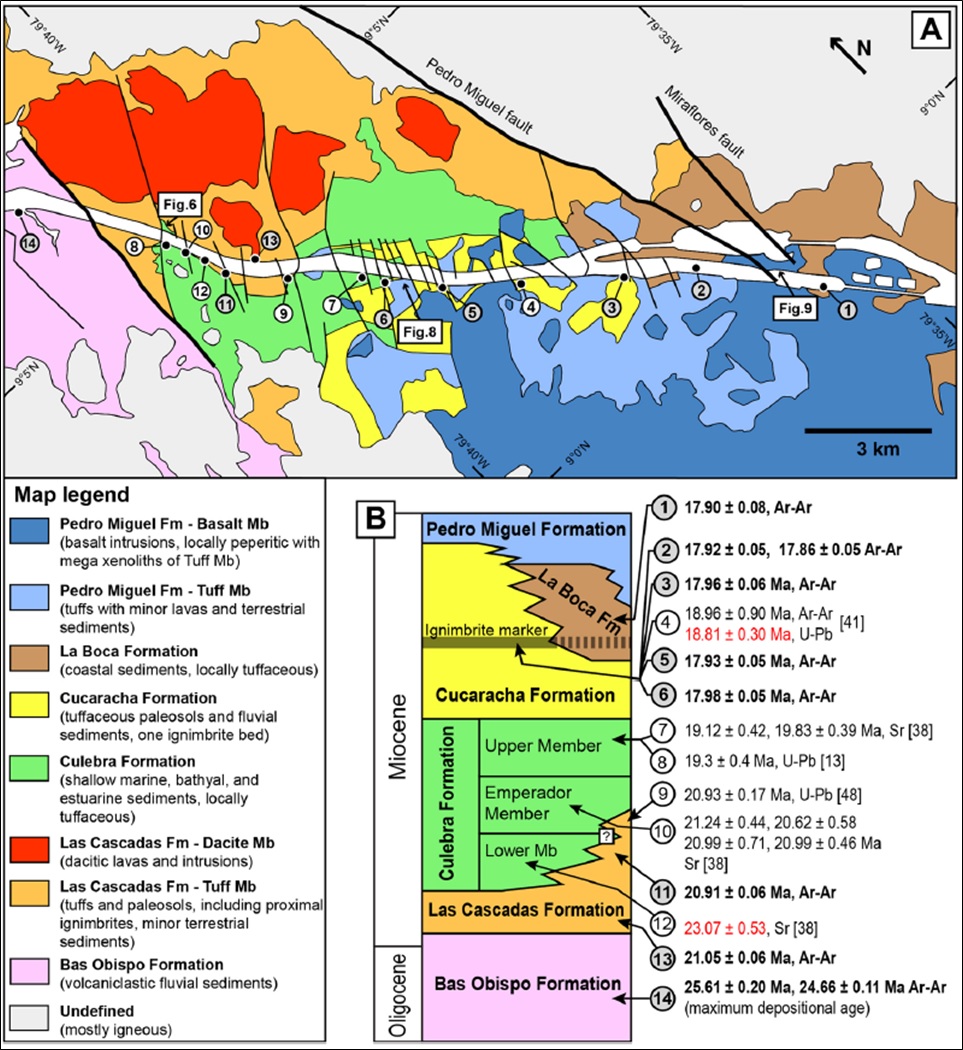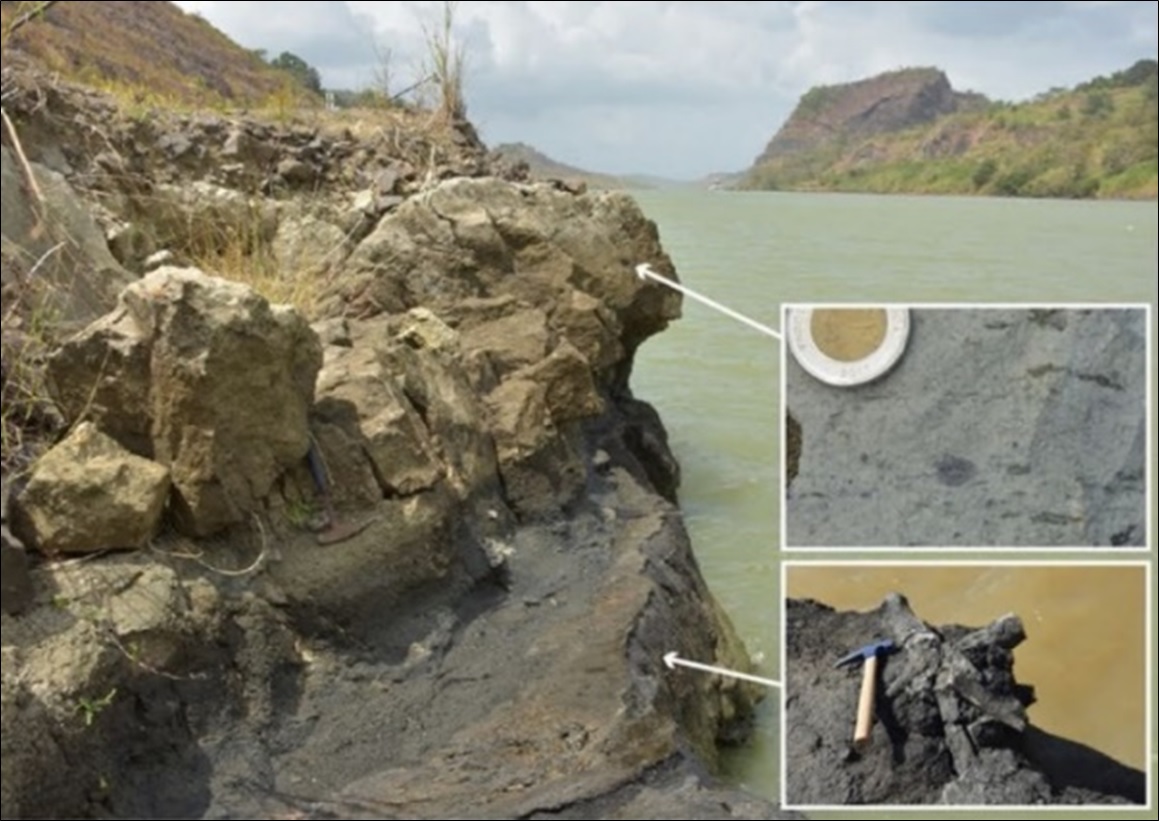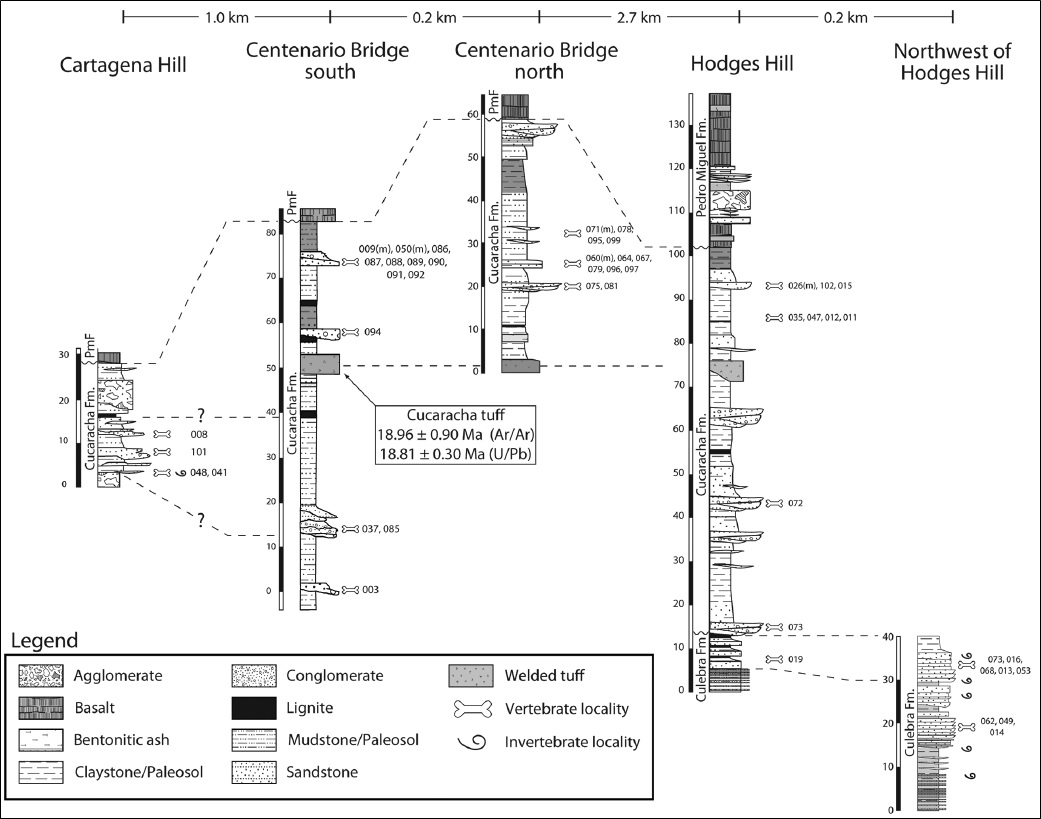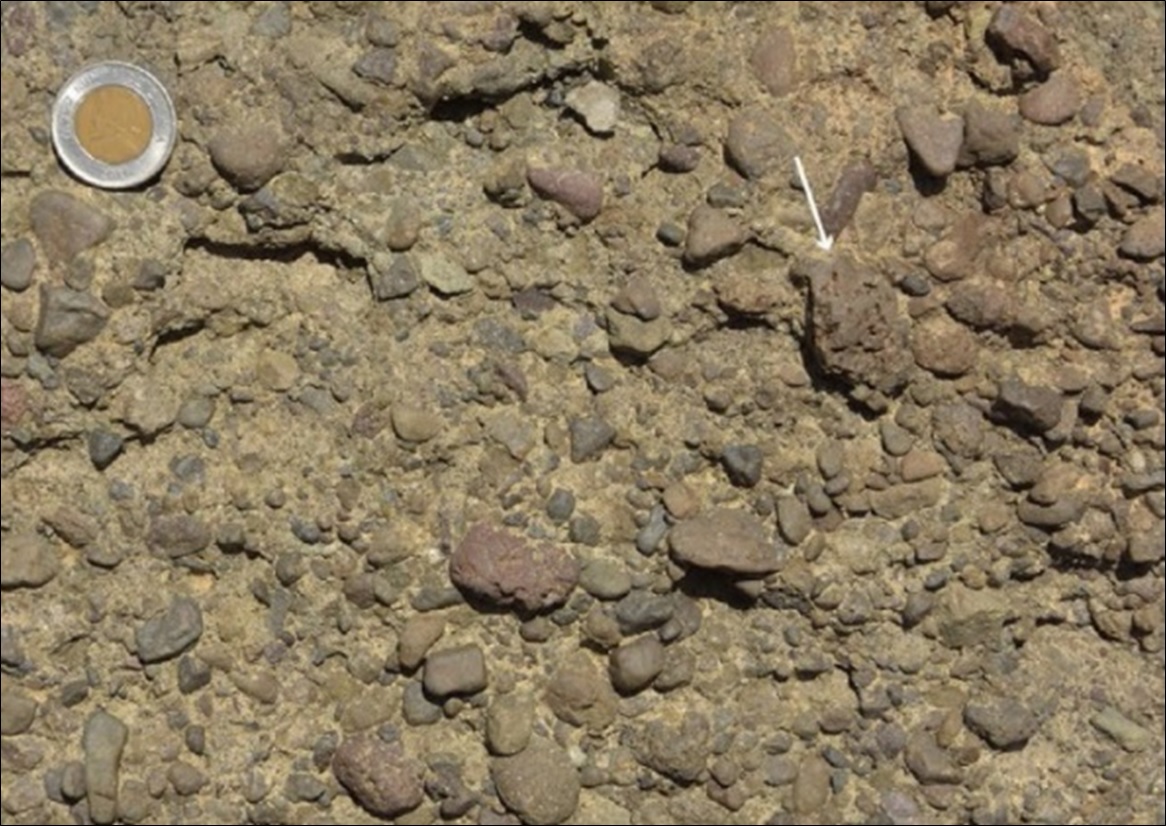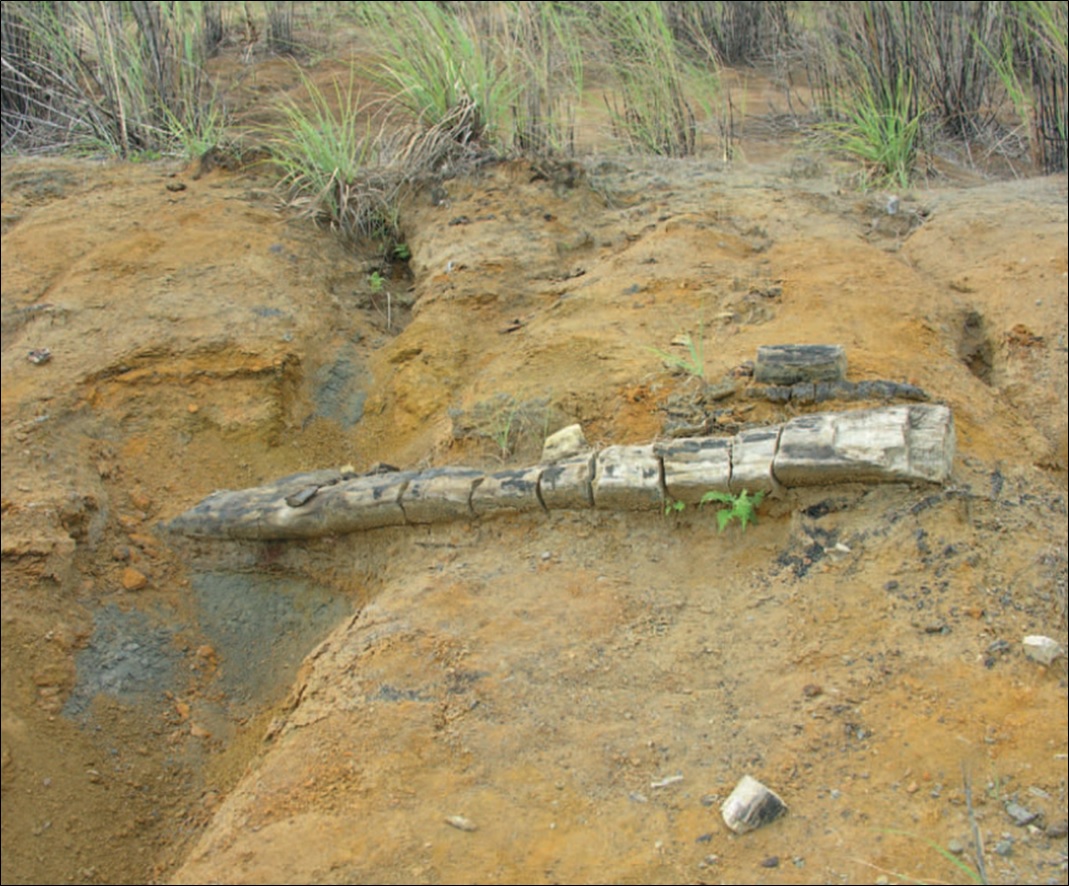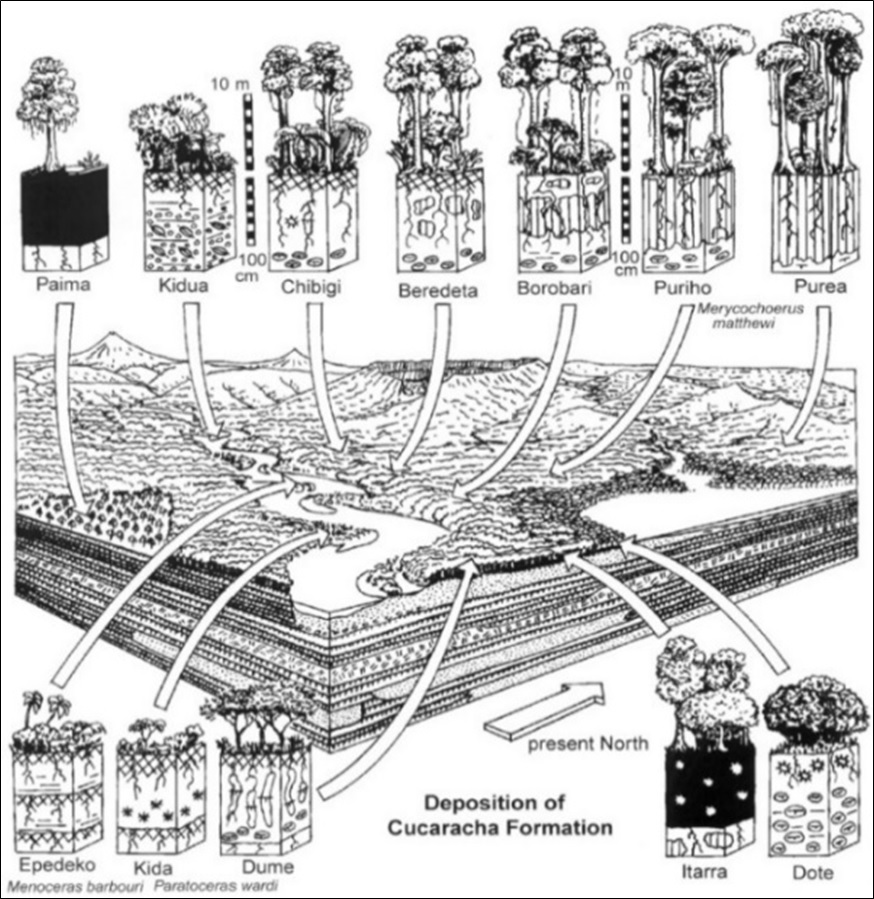Cucaracha Fm
Type Locality and Naming
Along Culebra Cut south of Continental Divide where village of Cucaracha was located near site of Cucaracha slide. Cucaracha was a canal-construction period village, now abandoned, on the east side of Culebra Cut. For the location see Woodring (1957, p. 39), cited under the name.
[Figure 1. Geology of the southern part of the Panama Canal (Culebra Cut and new Pacific locks area). (A) Revised geological map. (B) Revised chronostratigraphic chart with previous and new geochronological constraints (new data in dark circles and bold text) (Buchs et al. (2019)).]
Synonym: Cucuracha (a misspelling)
Lithology and Thickness
Thickness: 180 m (Head et al. (2012))
[Figure 2. Stratigraphic correlations among MacFadden et al. (2014)’s measured sections containing the Centenario Fauna from the localities depicted in Figure 031. The Centenario Fauna extends from the lowest stratigraphic locality in the Culebra Fm, at 20m above the base of the measured section northwest of Hodges Hill to several localities at ∼75 m above the base of the measured section at Centenario Bridge (see also Kirby et al. (2008)). PmF = Pedro Miguel Fm; Fm = Formation .]
[Figure 3. Ignimbrite of the Cucaracha Fm. Insets show the eutaxitic texture of the ignimbrite and charcoaled tree stump below the ignimbrite. Buchs et al. (2019).]
Relationships and Distribution
Lower contact
Upper contact
Regional extent
GeoJSON
Fossils
[Figure 4. Fossilized tree trunk within the Cucaracha Fm. Barat (2013).]
[Figure 5. Conglomerate in the uppermost part of the Cucaracha Fm, with scoriaceous clasts (arrow) at Cerro Hodges. Buchs et al. (2019).]
Age
Depositional setting
[Figure 6. Reconstruction of soils and vegetation in the coastal delta plain of the middle Miocene Cucaracha Fm. Retallack & Kirby (2007).]
Additional Information
References:
- MacDonald (1913a, 1913b)
- Wilmarth (1938).
- Graham et al. (1985)
- Woodring & Thompson (1949). Chiefly massive generally greenish-gray waxy highly slickensided bentonitic clay. Bed of agglomeratic andesitic tuff, 10 to 35 feet thick, occurs about 200 feet below top of formation. Maximum thickness about 625 feet. Overlies Culebra Fm; underlies La Boca Fm. Early Miocene. Most of the Cucaracha Fm appears to be non-marine. Poorly preserved specimens of Anadara, Lucina ?, and Tellina ? have been found in the lower part of the formation.
- Woodring (1957). Underlies La Boca Member of Panamá Fm. Assigned to early Miocene because both underlying Culebra Fm and overlying Panamá Fm are considered to be of that age.
- Woodring (1960); Woodring WP (1957–1982); Whitmore & Stewart (1965); Slaughter (1981); Graham (1988a); Collins et al. (1996); MacFadden (2003, 2004a, 2004b); Kirby & MacFadden (2005); MacFadden (2006 & 2009); Retallack GJ, Kirby MX (2007); Kirby et al. (2008); Cadena (2009); Montes et al. (2010); Uhen et al. (2010); Cadena et al. (2012); Head et al., (2012); Hastings et al. (2013 & 2016); Jaramillo et al. (2014); Herrera et al. (2010, 2014a, 2014b, 2019); MacFadden et al. (2010, 2014 & 2015b); Rincon et al. (2015a, 2015b); Jud et al. (2016); Steadman et al. (2016); Jud et al. (2017b); Rodríguez-Reyes et al. (2014, 2017a, 2017b); Farris et al. (2017); Buchs et al. (2019)
